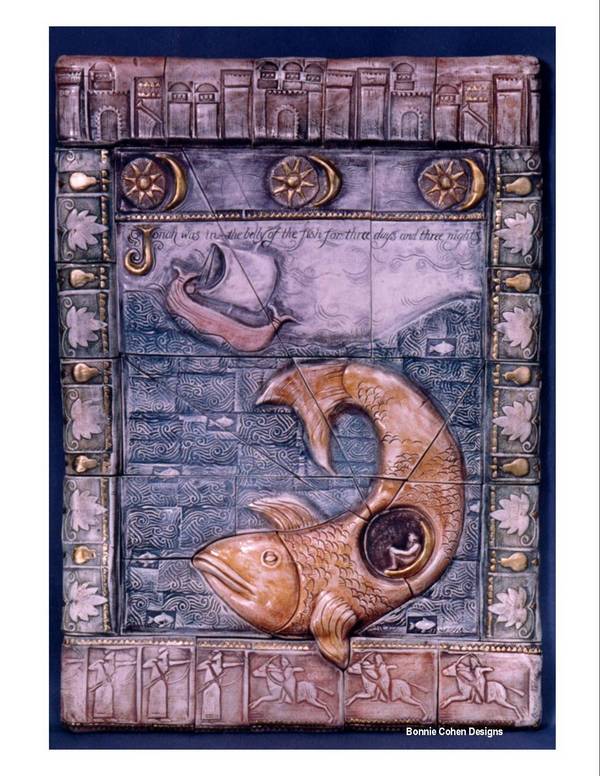AGJA Newsletter
Wikipedia tells:
The book of Jonah (Yonah יונה) is one of the 12 minor prophets included in the Tanakh. According to tradition Jonah was the boy brought back to life by Elijah the prophet, and hence shares many of his characteristics (particularly his desire for 'strict judgment'). The book of Jonah is read every year, in its original Hebrew and in its entirety, on Yom Kippur - the Day of Atonement, as the Haftarah at the afternoon mincha prayer.
Teshuva - the ability to repent and be forgiven by God - is a prominent idea in Jewish thought. This concept is developed in the book of Jonah: Jonah, the son of truth, (The name of his father "Amitai" in Hebrew means truth,) refuses to ask the people of Nineveh to repent. He seeks the truth only, and no forgiveness. When forced to go, his call is heard loud and clear. The people of Nineveh repent ecstatically, "fasting, including the sheep", and the Jewish scripts are critical of this.
When praying, Jonah repeats God's 13 traits failing to say the last one which is "...and Truthful", and changing it with "...and who is willing to forgive the bad". God responds by showing Jonah that he is "angry at doing good", and that he too would agree to spare an ephemeral plant if it has importance for him.
See also the wikipedia article on Jonah in rabbinic literature





